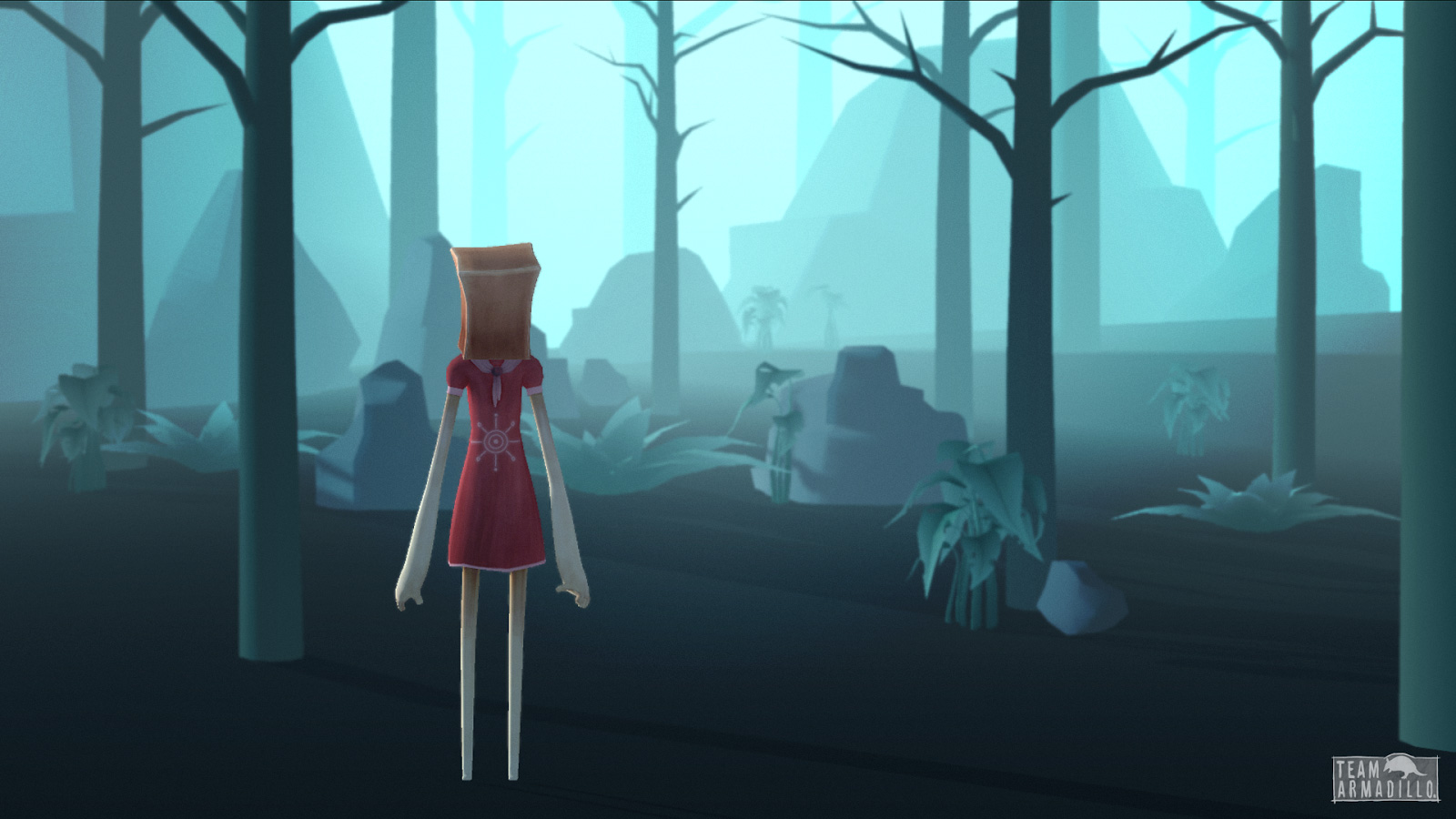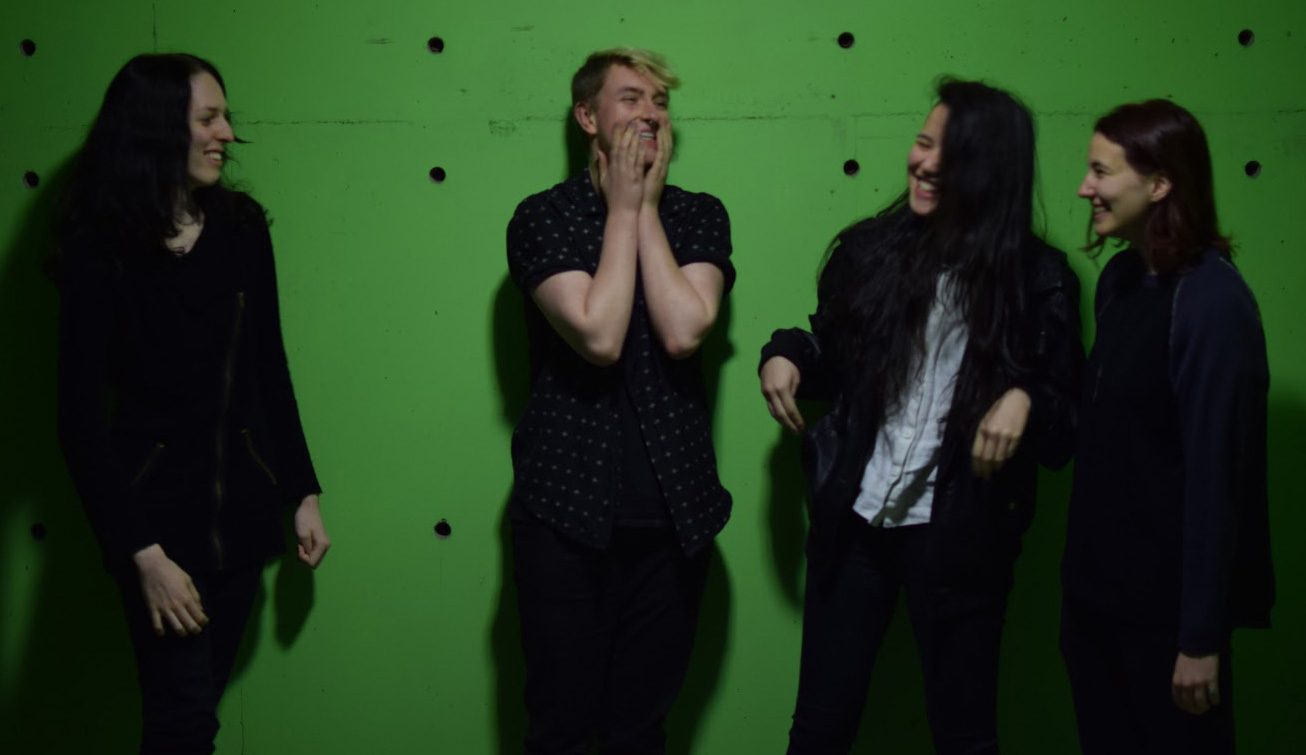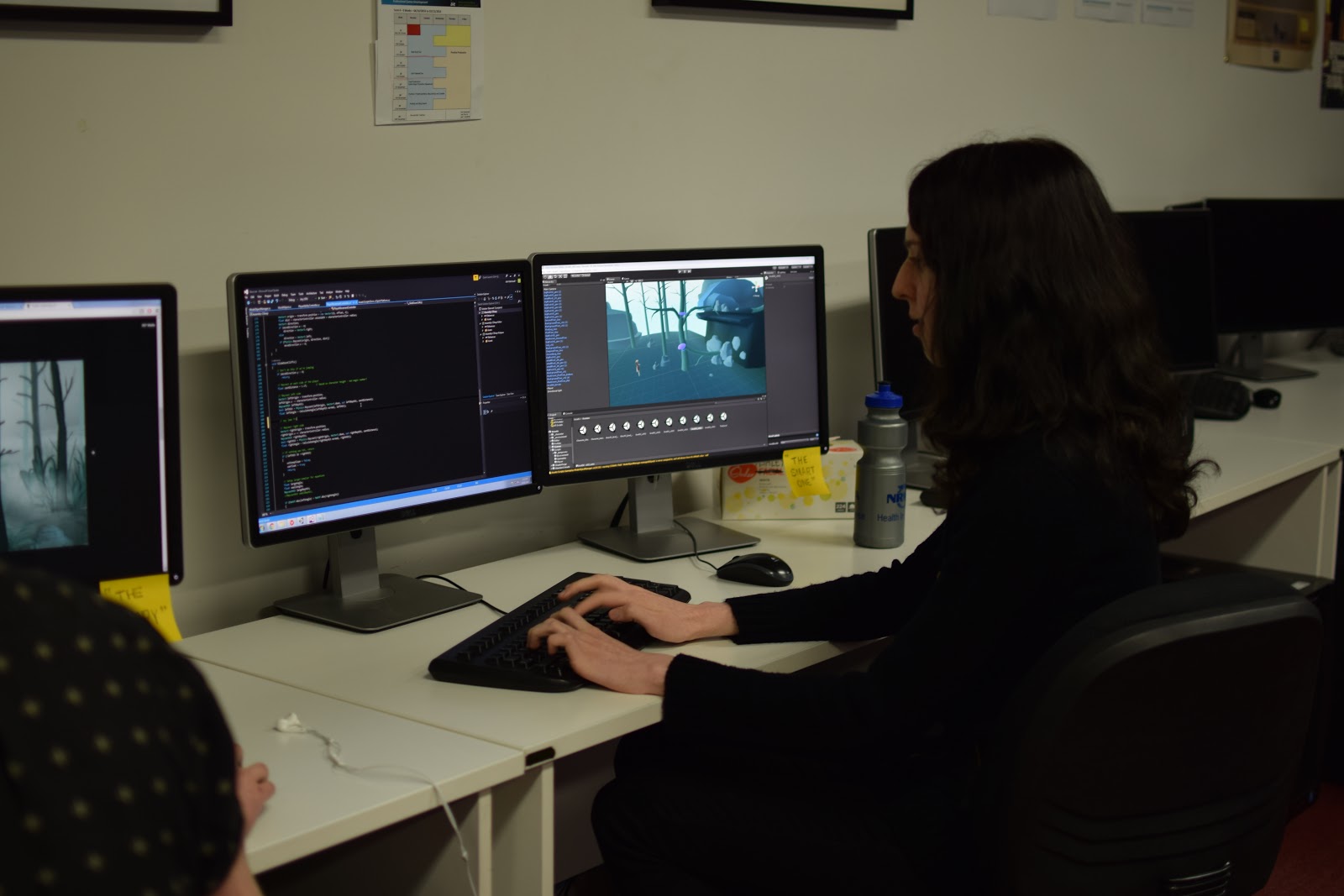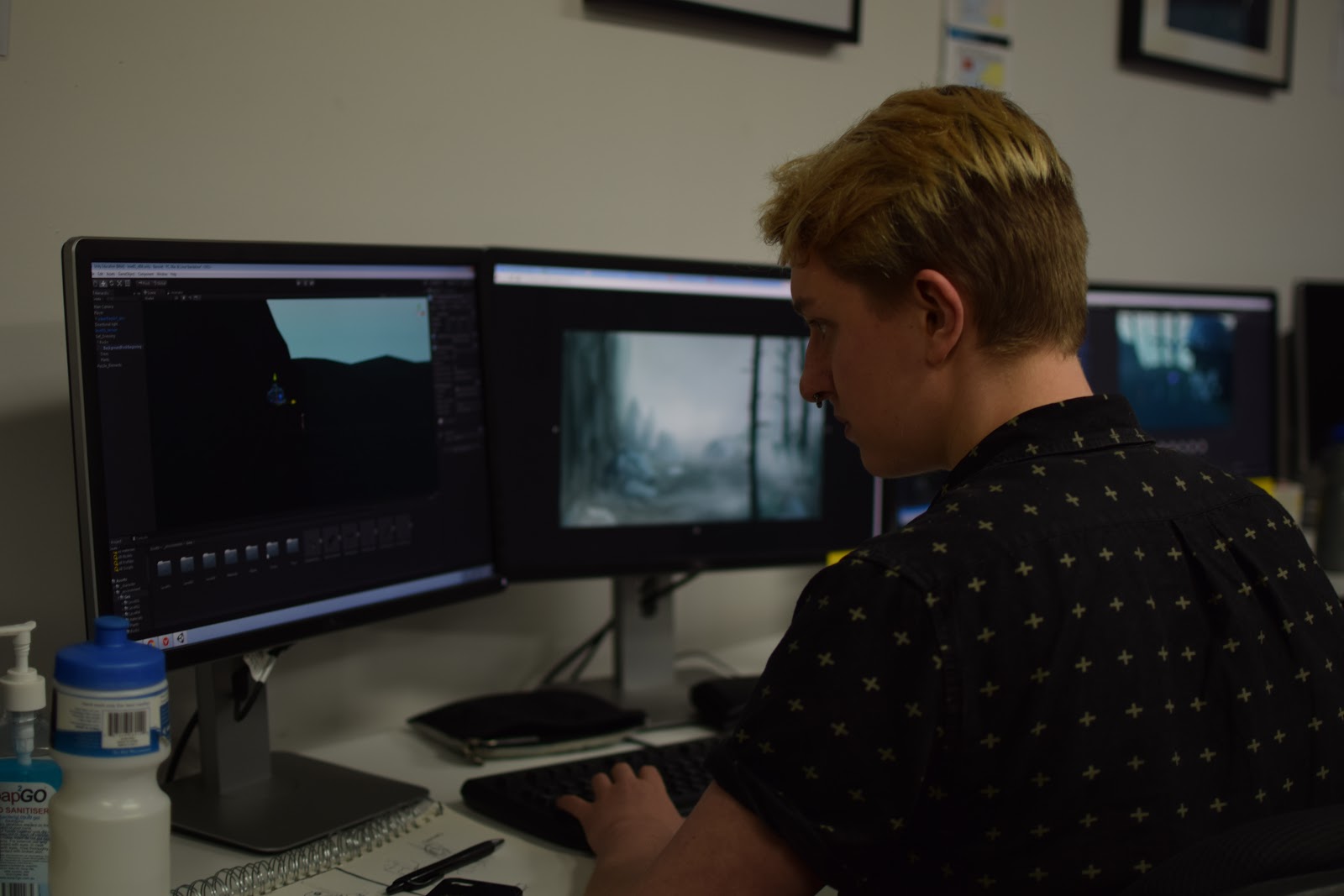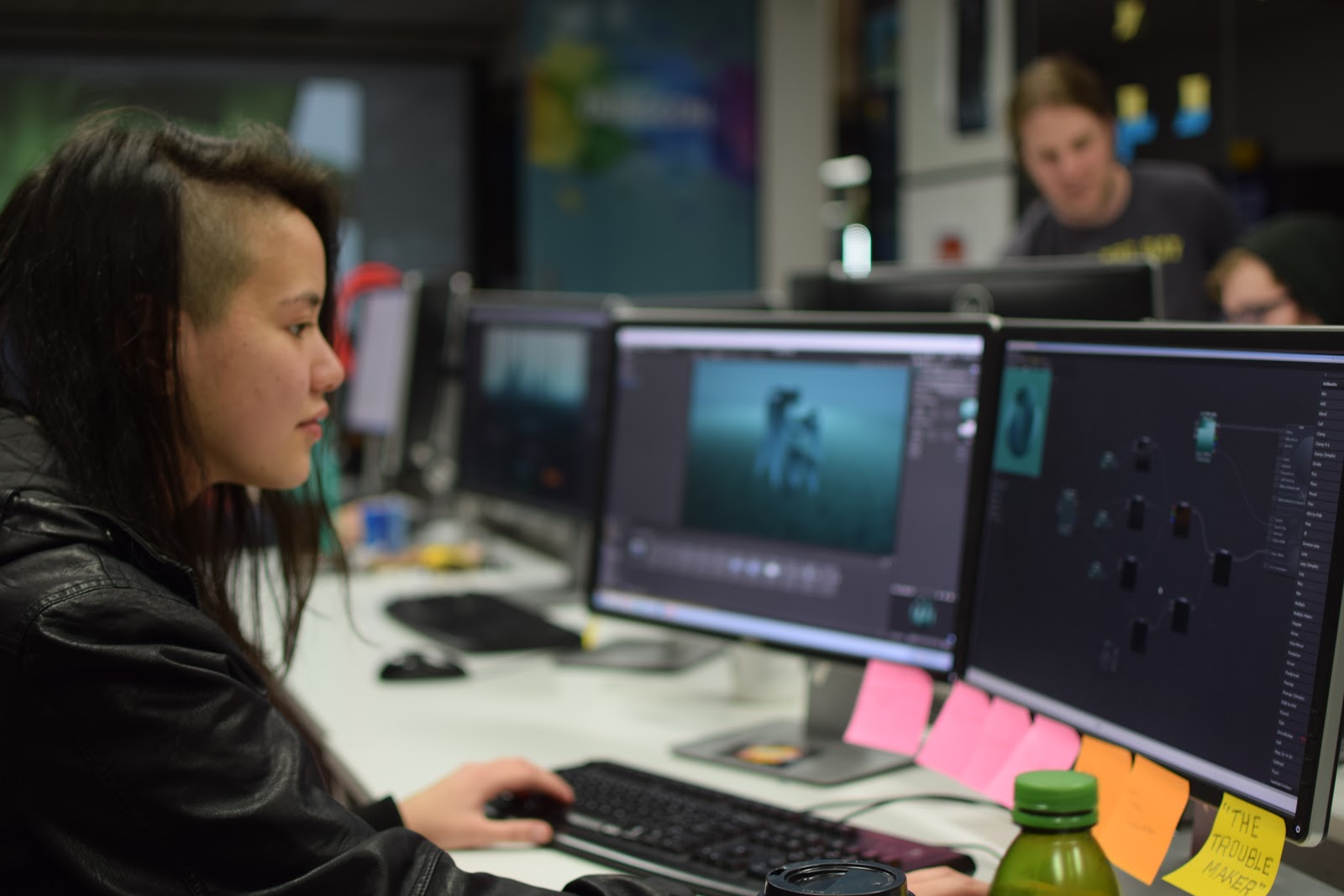How is a game born?
We went to the classrooms to find out how team ‘Team Armadillo’ came up with the game idea for their major games project.
Their game ‘Baroviet’ is a 3D minimalist puzzle sidescroller where a lost girl must navigate through puzzles by creating tears between the physical world and the realm of spirits and shadows.
The game was originally born from a previous team based project earlier in the year where they had to make a one button game. Their idea process started with researching myths and legends - a strong interest the entire team had - and the main story grew from there.
The team then realised after this project that they worked really well together being made up of one designer, one programmer and 2 artists. The team spent many hours cycling through about four or five variations of the game, ranging from isometric stealth games to finally the puzzle side scroller they’re now working on.
The team is about 4 weeks into development, take a look at a bit of gameplay footage.
1. What's the team name?
Team Armadillo.
2. What's the game name?
Baroviet. It’s derived from the name of an old Slavic god who was a protector god with no arms and five faces. We’ve taken a lot of inspiration from this mythos.
3. How did you come up with the idea of your game?
The original concept for Baroviet was born during one of the Proof of Concepts week earlier this year. The proof of concept is a short period where you take a game concept and make a playable game from it. Team Armadillo consists of the original four that were part of this group. Initially to fit that brief, it was a one button game, but the story and character designs have stayed fairly consistent to this initial idea.
When we decided to go into production together, we spent the weeks over the break brainstorming possible ideas. We went through about four or five variations, from isometric stealth games to finally the puzzle side scroller we’re now working on. We wrote up pitch documents and discussed the ideas with multiple people, and we were willing to throw out ideas we knew wouldn’t work.
4. What is the game about?
The story follows a young girl attempting to escape sacrifice. She wakes and has been told she has been saved by the spirit, though it is unclear if this is true. The spirit guides her through the forest and gives her the ability to see more than she ever could before. It informs her that all the spirits are being hunted and in order to protect themselves they closed off pathways in the forest. The only way forward is to complete the puzzles they left behind - and the only way to complete them is with the powers gifted to you.
5. What makes it different?
We have a unique selling point through the main mechanic. The use of lenses that change what’s active in the world, and also how the world looks, is an interesting dynamic to bring to play. We manage to combine this with a dark implicit narrative that keeps players guessing and we’re trying to imbue each puzzle element with a place in this narrative. Ultimately I think what’s different about it is our approach to both storytelling and gameplay.
6. What is the art style like?
The art style is drawn from European and American folklore styles but places an emphasis on silhouette and block colour. It’s eerie 3D with atmospheric depth perception and combines bold colours with jarring edges. We emphasise the geometric shapes in organic structures, drawing on utilitarian and decorative aspects of art.
7. Do you think you will get the game done in time?
We have a pretty solid schedule that we’re working to, but we also want to keep this flexible. Initially, we were aiming for a high ten levels but we’ve decided to cut that down to six. We’re open to throwing out ideas we have passion for if they’re going to distract us from finishing the project, and that’s really important in development. When we scoped the project, we created a board that allowed us to write all of our dream ideas down. We’re not allowed to touch those ideas until everything we initially scoped is complete. This way allows us to develop ideas about the game without risking over scoping.
As it stands, we’re confident we’ll finish the game - but we’re also aware that there’s a lot of potholes in major production.
8. Where do you hope to see this game once you are done?
Currently, we are focused on finishing this game to a high polish. We have entertained the idea of taking it further and all of us are open to that potential. However, as it stands, we’re all looking forward to having a finished and polished piece of work for each of our portfolios. That will be very valuable for us to have - both in terms of showcasing and in terms of experience.
9. As a team what has been the hardest part of development so far?
The most difficult part of development has been coming out of our first pitch. We received a lot of great feedback that made us re-evaluate our set of mechanics and our reasoning behind each. As we went through many iterations of the idea of the break, this was difficult. We had to rethink a few of our concepts and really nail that idea and how players would approach the game. We spent a good day or two simply throwing ideas of each other and other people until we were comfortable enough to go into production. We needed to have a solid idea before we went into that.
10. As a team what has been the easiest part of development so far?
We struggled to answer this question. Nothing is particularly easy. It’s either well-known to us but time consuming, or it’s a challenge.
“Honestly, the easiest part has been getting along with the team.” - Jemima
As corny as it sounds, having a team that works well together and one that can communicate honestly with each other is a huge asset.
11. As an Artist what is it like to work with programmers and designers? As an Designer what is it like to work with programmers and art? As an Programmer what is it like to work with designers and art?
Nik/Designer: I love being able to work in this team. I love being able to come up with ideas and share them with the team, and we can all watch them come to life through art and programming. Our current method of production involves me creating grey boxes (very basic layout levels) which are then sent over to the artists for paintovers and terrain building. This involves the artists painting over these basic levels and building 3D models of them in Maya. Ashely is a brilliant programmer and we’re starting to see this little world come to life. I feel like this game has a sense of direction, not only in a consistent gameplay style, but also in terms of art style. This idea has allowed a challenge for myself with designing puzzles, but also for each of the other disciplines. It’s very exciting working together.
Serena/Artist: Working with a team has been beyond rewarding. The evolution of our art from static concepts to an interactive experience would be impossible without a truly solid designer and programmer. I love working in close proximity to them, bouncing ideas off each other, giving each other feedback, motivating one another. Team Armadillo is so valuable to the quality of my esteem, I love them to pieces.
Jemima/Artist: Working with other people is always an interesting experience, but I am very lucky to have such an amazing, hardworking team. As an artist, there is only so much you can do with the art you create. Being able to pass my assets on to designer/programmer and see them come to life is such a cool thing to see. I couldn’t ask for a better team, we’re like a family! Who only hate each other sometimes.
Ash/Programmer: I’ve been lucky to get a team where all members are both very skilled and get along really well. I have been learning how to work and communicate with both the team as a whole, as well as with individual artists and designers. Discovering their workflow and what resources they need to be most effective has been a very interesting experience, made easier by the fact that we all work really well together.
12. As a team have you had to do much research on how to make your specific game?
Yes.
Designer - “We’ve had to play a few similar games in terms of gameplay and art style. A few of us have played Inside for inspiration. In terms of design, I’ve had to research approaches to puzzle design because I find it so difficult. It’s been good to get perspectives from people in the industry in this regard. We’ve had to research a lot in terms of narrative and world building, too. Because we’ve borrowed from the Slavic mythos for the game’s title, there are a few themes we’ve tried to imbed in the game (even though it’s only loosely associated with it).
13. What measures have you taken to make sure you will get the project done on time?
We scoped out the project and have been using Trello to keep track of our progress. We consistently update Trello as we complete tasks so we can stay focused on what needs to be done. We also have set goals for what we want completed by set dates. Our Alpha (first iteration) is the 12th September, Beta (second iteration - most things completed) is set for the 17th October and our final game is set for a week before the Gold final submission date, the 31st October. This is a clear contingency plan if we miss any earlier goals. We’ve also been coming into college on extra days and have been working at home, too. Communication is very important and we talk to each other constantly when at home, but also conduct daily meetings so we’re all aware of everyone’s progress and daily focus.
14. Has AIE readied you for developing a game?
Nik/Designer: I’m confident that I have the skills to develop a game, but that’s up to a point. I’ve been given both theoretical and practical skills, but nothing can prepare you for actual production. There are too many variables involved and each time is a little different. I think developing a game is a skill that is never really perfected. Being as prepared as possible is important, but it’s just as important to be flexible when things don’t go to plan.
Serena/Artist: AIE has created this economy of ideas where the people here, teachers and students, are the most valuable assets when it comes to preparing us for game development. The combined effect of learning off of others, and the actual experience of production will hopefully ready me for development, it’s too soon to tell.
Jemima/Artist: AIE has definitely given me a solid set of skills that will be useful in the industry. Not only that, but the network of other developers/students I have had the chance to meet because of AIE has also helped! My time here has been so incredibly valuable and being able to work on projects with others has definitely given me an insight into the skills needed for industry.
Ash/Programming: Insofar as it’s possible to be ready for developing your first game, yes - AIE has definitely given me a solid foundation in terms of both skills and knowledge. However, nothing can really prepare you for the reality of developing a game under a time limit. There are so many things to consider and problems to solve that you just cannot understand ahead of time.
15. What would you tell people who may be interested in studying at AIE?
AIE is a rewarding place, definitely. You learn a lot of useful industry skill, but it’s a lot of hard work. To make the most out of this place, you need to put your head down and work hard - both in class and out of class - to gain the best skills and results you can. The most valuable asset here, however, is the people. They will be your peers in the industry and building good relationships with them is important, both students and teachers alike.
16. How long do you have to finish it?
The official Gold release - around the 2nd of November.
17. Are you having fun?
Yeah. we all work really well together and it’s easy to have fun when you’re part of a group that gets along.
